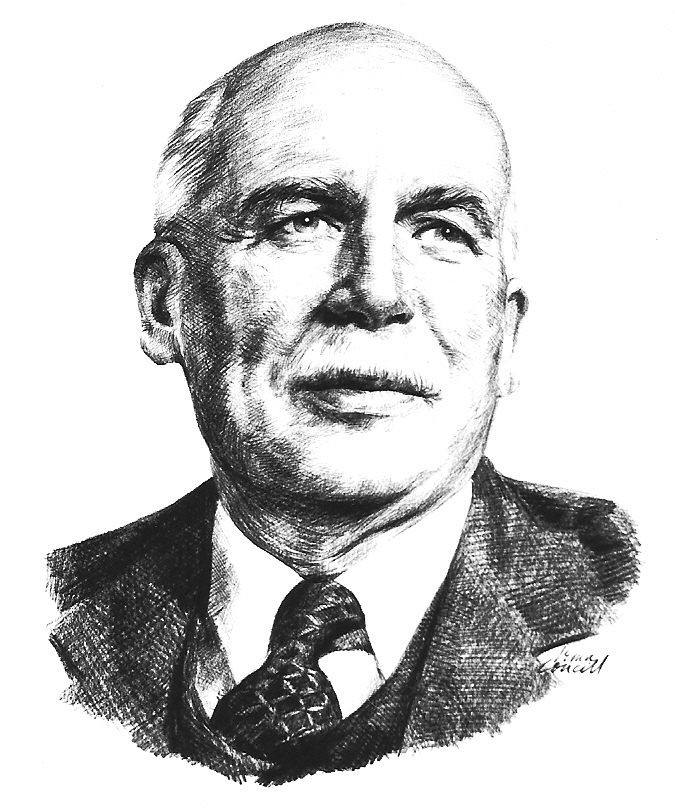Wallace Rupert Turnbull

Nickname: W. Rupert
Birth Date: October 16, 1870
Birthplace: St. John, New Brunswick
Death Date: November 26, 1954
Year Inducted: 1977
Awards: DSc (Hon); FRAS; FRMS; FCAI
The patient application of his aeronautical theses to a number of problems unique to flight, and more especially his invention of the successful variable pitch propeller, have been of outstanding benefit to Canadian aviation
Establishing in Canada
W. Rupert Turnbull, M.E., D.Sc. (Hon), was born in Saint John, New Brunswick, on October 16, 1870. After graduating with a degree in mechanical engineering (M.E.) from Cornell University, Ithaca, New York, in 1893, he undertook post-graduate work in physics at the University of Berlin and Heidelberg, Germany. After a short period with General Electric Company, New Jersey, he returned to his home at Rothesay, New Brunswick. There he established his own research laboratory and set up his own company as a consulting engineer.
Canada's First Wind Tunnel
Turnbull became interested in problems related to heavier-than-air flight, and in 1902 constructed Canada's first wind tunnel to investigate the properties of airfoils. During the next decade he continued researching the longitudinal stability of aircraft and investigated several forms and curvatures of airfoils with respect to lift and drag. His findings, which proved to be of high scientific value, were published in aeronautical journals in the United States and Great Britain.
Innovating the Propellor
Turnbull found that only meagre scientific data was available on the efficiency of the propeller. After extensive experimentation with propeller diameter and pitch coefficient he published an important paper titled "The Efficiency of Aerial Propellers" in the Scientific American Supplement, April 3, 1909. He realized that to operate efficiently under different conditions of flight—take-off, climb, cruise, etc., - the characteristics of the propeller must be varied, and that the only characteristic which could be adjusted during flight was the pitch.
During the First World War, he went to England to offer assistance to aircraft manufacturers, and designed propellers for Sage seaplanes, and a Short 184 seaplane, which attained an altitude record of 13,000 feet (3,960 m) on June 9, 1917. At this time, he began to work on a mechanism which would allow the pilot to control the pitch during flight, like changing gears on a car, so that the pitch could be set at different angles for take-off and landing, and for level flight.
Gaining a Patent
At war's end, Turnbull returned to Rothesay and continued work on the design of a variable pitch propeller for which he gained a patent in 1922. The propeller itself was made by Canadian Vickers Limited and fitted to a 130 hp Clerget engine on an Avro 504K. The Royal Canadian Air Force (RCAF) conducted the first test flights at Camp Borden and the Turnbull variable pitch propeller proved highly successful. However, the Canadian government refused to provide assistance beyond the testing stage because the project would then be classified as commercial. The patent rights were sold two years later, and Turnbull's design became the Curtiss-Wright electric propeller, of which many thousands were manufactured during and beyond the Second World War.
A Design - Inventor
Turnbull was elected a member of the research committee of the National Research Council of Canada (NRC). His interests extended into many fields, such as hydroplanes, a torpedo screen, bomb sights, and harnessing tidal power, but his systematic approach to aeronautical research was regarded by many as his greatest and most significant contribution. In recognition of his endeavors, the University of New Brunswick conferred upon him an Honorary Doctor of Science degree in 1942.
To add to his already formidable reputation as a designer-inventor, he was awarded the bronze medal of the Aeronautical Society of Great Britain along with an Associate Fellowship, and he was named a Fellow in both the Royal Aeronautical and the Royal Meteorological Societies. The Canadian Aeronautical Institute named him an Honorary Fellow in 1942 and in 1955 the annual W. Rupert Turnbull Lectures were established. The St. John airport, Turnbull Field, is named in his honour. The original propeller is displayed at the National Aviation Museum at Rockcliffe, Ottawa. He died in Saint John, New Brunswick, on November 26, 1954.
W. Rupert Turnbull was characterized as a quiet, shy person, but determined to prove his theories. His wife tolerated his experiments, but in 1902, there were very few people who believed that a machine could get off the ground. She admonished him: "Don't, for pity's sake, let anybody know what you're doing, or you'll be put down as a flying machine crank!" He must have followed her advice, for few of his countrymen know of his aeronautical contributions - a Canadian who never piloted a plane but who invented the controllable-pitch propellor in his own backyard.
W. Rupert Turnbull was inducted as a Member of Canada's Aviation Hall of Fame in 1977 at a ceremony held in Edmonton, Alberta.
To return to the Inductee Page, please click here.
